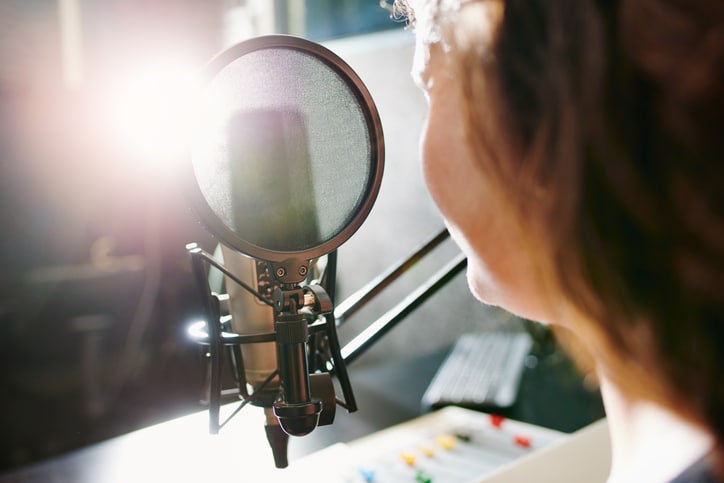
Podcasts are huge these days. Popular podcast Serial has been downloaded millions of times and has become a pop culture phenomenon right alongside other “did they really do it” series like Netflix’s Making a Murderer. Podcasts are also used for informational and educational purposes. NPR offers its programs in podcast form so users can listen at their own pace. They’ve even developed programming that doesn’t broadcast on the radio. It only exists in podcast form.
The podcast has arrived, and it doesn’t appear to be going anywhere anytime soon. The question for law firms, as with any new tech innovation, is whether developing a podcast for the firm makes sense. We believe creating a podcast can be a powerful, memorable branding tool. Here are a few reasons why your firm should consider starting one.
A Branded Podcast Builds Credibility and Engagement
The problem most law firms face isn’t competence. The process of becoming a lawyer usually takes care of this. The problem firms face is getting their name out into the community effectively. You want to communicate that you’re competent and successful but at the same time approachable. Much of law firm advertising veers far in one direction or the other. You see “prestige” billboards that may communicate “you can’t afford me” to a good portion of the community, and you see cheesy TV commercials that communicate “we’re not a serious firm” to another portion of the community.
Creating a podcast is a low-cost, low-effort way to engage with your community. You can communicate in a down-to-earth fashion by just being yourself. You can use a podcast to indirectly convince community members of your ability and skill, and you can disarm the negative notions that can come from prestige advertising.
It’s an Inexpensive Advertising Tool
Another advantage of podcasting is cost. It’s very inexpensive to produce a podcast, and it costs nothing to host it. All you need to produce it is some simple audio recording equipment and a topic that you can discuss. Hosting a podcast is a simple affair using a hosting tool like Libsyn. Hosting tools like this one will automatically publish your podcast to iTunes and all the other major podcast services. Once your content is published, you can promote your podcast using your existing social media channels through both regular and paid posts.
Compare this to the costs of producing video for social and the costs of traditional advertising. To produce social video, you’ll have to invest in video recording equipment. If you want a quality product, you’ll probably end up having to hire a video production group to produce them. Then, consider traditional print and TV advertising. The costs are astronomical compared to the costs of producing a podcast.
It’s an Attractive Alternative to Video
Let’s be honest: we don’t all look like the beautiful pretend lawyers on Suits. Even if you are blessed with great looks, you may not be comfortable in front of the camera. If video makes you look shifty, insecure, or nervous, you’re not helping your firm’s advertising efforts. Focusing your efforts on a podcast avoids the difficulties and aesthetic concerns that come with video.
The other issue with video is that they need to be short. Videos, especially in advertising, need to be fairly “snackable.” Podcasts, on the other hand, can take a deeper dive. People often listen on their commute or at the gym, so they are looking for content of a certain length. Going deeper on a given topic is one way to reaffirm your credibility, too.
Getting Started
If you’re ready to start a podcast for your firm here’s a brief guide to the steps you need to take.
Equipment
You can record audio using the internal microphone on your laptop, but it won’t sound very good. Invest in a midrange USB microphone, like the Snowball or Yeti from Blue. The difference in sound quality will astound you. You can easily record one or two people around a microphone like those. If you plan to invite more than one guest onto your podcast, you may need an additional microphone.
Software
If you’re recording only one microphone, your software needs are simple. Free recording and editing programs like Audacity for PC and GarageBand for Mac will do just about everything you need. Call Recorder for Skype is an inexpensive Mac app that will simplify things for you, too. We recommend starting with this simple setup before exploring multi-mic (multi-track) recording. Once you’re familiar with the basic principles, you’ll have an easier time scaling up.
Topics and Launch
All that’s left is to come up with some topics and get going. Choose topics community members are likely wondering about and answer whatever questions they may have. This is a tool for getting clients in the door. Choose topics that offer as much value as possible, topics people will want to listen to.
All that’s left is to launch. Hit record, start talking, and publish!

 Mon-Fri 9 AM to 5 PM Mountain
Mon-Fri 9 AM to 5 PM Mountain 888-686-3025
888-686-3025



